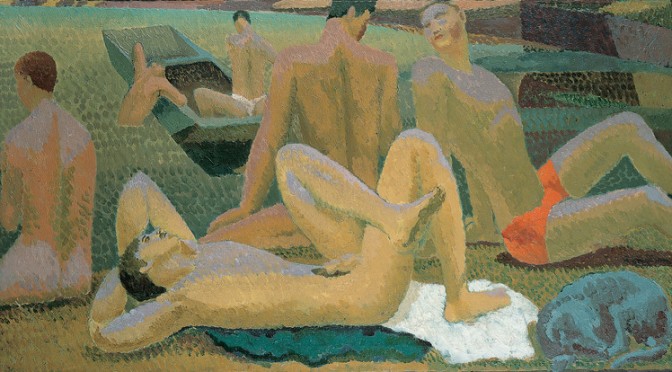Featured image: Duncan Grant © Tate
by Ellie Jones, PhD researcher funded by the Arts and Humanities Research Council and Tate. Her thesis centres on expressions and perceptions of queerness and race in early twentieth century British art.
“Dearest, at this moment I would give my soul to the Devil if I could kiss you and be kissed.”
In the summer of 1908, the Bloomsbury artist Duncan Grant wrote anguished letters to his sometime lover and lifelong friend, the economist John Maynard Keynes. In the infancy of their romance, the pair had been forced to spend time apart while Grant holidayed with family friends, a period of separation which served only to deepen their emotional closeness. Absence, after all, makes the heart grow fonder.
Grant’s letters expose a longing for the comfort of commonality, the security we find in shared experiences. He needed the company of someone who understood what it meant to be a gay man living in Britain before decriminalisation in 1967. “How much I want to scream sometimes here for want of being able to say something I mean,” one letter reads: “It’s not only that one’s a sodomite that one has to hide but one’s whole philosophy of life; one’s feelings for inanimate things I feel would shock some people.”

These letters are revealing of the ways Grant linked his sense of alienation, at the hands of his sexuality, to a broader sense of difference relating to the way he perceived the world around him. He understood his queerness as a central organising structure of his vision and his personhood; his “whole philosophy of life”. By making an explicit connection between his sexual alterity and his way of seeing, he leads us to consider: in what ways do our sexual pleasures and fantasies inform the way we see the world? Continue reading Painting in circles and loving in triangles: the Bloomsbury Group’s queer ways of seeing

